If you were asked to list your favorite fruits, what would be in your list?
Most probably, all of you will jot down the popular ones such as mangoes, bananas, apples, oranges, pineapple, etc. There is nothing wrong if these are your favorites as they are delicious and nutritious, and at the same time are the ones commonly available and accessible in the market.
![A treat of guyabano 1 Guanábana [soursop] (Annona muricata)](https://businessdiary.com.ph/wp-content/uploads/2014/08/guanbana_soursop__annona_muricata-300x278.jpg)
Here is another question. Did you write down guyabano as one of your favorite fruits? If yes, it means you are among those people who have discovered the delight of eating guyabano.
Knowing your guyabano
Soursop, (Annona muricata Linn.), more popularly known as guyabano, is commonly grown as a backyard fruit tree in the Philippines. It has great economic and commercial potentials but remains underutilized.
Guyabano is not endemic to the country and its roots can be traced all the way to Central America. It is also cultivated in Africa and has found its way to the soils of Southeast Asia in such countries as Indonesia, Malaysia, and the Philippines.
Usually, seeds are used to propagate guyabano but propagation can also be done asexually by marcotting, grafting and budding. It can grow in any type of soil but to get good fruit bearing, loose, fairly rich, deep loam and well-drained soil is best recommended. The tree bears fruits in three to five years time after planting. The tree flowers all year round and peaks from May to June. Its fruit ripens in November and December.
When picking a guyabano from the tree, one should only harvest mature guyabano. It is in its maturity when the skin color is shiny green or yellowish green and the spikes are set far apart. Fruits that are picked prematurely will ripen but has poor eating quality. Fully mature fruits ripen in three to five days after harvest. Extra care is needed in handling the fruit as it gets easily injured because of its tender skin. It is advised to refrigerate the ripe fruit for only two to three days.
Like any other fruit tree, guyabano needs proper care of as it is prone to attacks by a number of pests such as root grubs, mealy bugs, carpenter moth larvae, scale insects, oriental fruit fly, and nest building ants and it can catch diseases such as root rots, pink disease, and anthracnose.
It can be intercropped with banana, coffee, cacao, blackpepper, and citrus. It may also be intercropped to bigger fruit trees such as avocado, starapple, durian, mango, jackfruit, rambutan, santol, and coconut trees.
A multi-purpose fruit tree
The fruit is rich in fructose, the vitamins C, B1, and B2, potassium, magnesium, thiamin, copper, niacin, folate, iron, riboflavin, and dietary fiber making it a healthful food. The guyabano fruit is popularly processed into candies, jam, jelly, preserves, tarts, shakes, ice cream, and sherbets and other beverages.
Many believe that guyabano is truly a wonder crop as, aside from its edible fruit, all its parts including the bark, leaves, roots, and even its seeds have natural healing properties.
The pulverized seeds find use as a skin astringent and a concoction made from it is a good vermifuge and anthelmintic against parasites, head lice, and worms. It is also used as an all natural pesticide against caterpillars, army worms, and leafhoppers on plants.
The leaves are used as a sudorific (inducing perspiration). It has tranquilizing and sedative properties. It is also used as a treatment for pain and inflammation cause by arthritis and rheumatism. It is used to treat eczema and other skin diseases, and can help to bring down fever. The sap of young leaves can be applied directly on pimples. The crushed fresh leaves are also applied on skin eruptions for faster healing and prevent scarring. Drinking tea out of boiled leaves may help induce sleep.
The bark, roots and leaves, on the other hand, are used to treat diabetes, and also has tranquilizing and sedative properties for relief from colic and convulsions. It acts as an antispasmodic and is beneficial to those who are hypotensive.
In a study done by the Department of Science and Technology-Industrial Technology Development Institute (DOST-ITDI), it was found out that the green and unripe guyabano has more flavonoids than its yellow and ripe form. Flavonoids may help in preventing cancer, allergies, infections, and viruses. Studies also show that guyabano outdid Metformin, the most commonly used drug maintenance of diabetics, in lowering blood glucose levels. Because of these, DOST-ITDI is now promoting guyabano as a natural dietary supplement and on the process of developing guyabano capsules and tea bags for commercialization.
In a study done by the Department of Science and Technology-Industrial Technology Development Institute (DOST-ITDI), it was found out that the green and unripe guyabano has more flavonoids than its yellow and ripe form. Flavonoids may help in preventing cancer, allergies, infections, and viruses. Studies also show that guyabano outdid Metformin, the most commonly used drug maintenance of diabetics, in lowering blood glucose levels. Because of these, DOST-ITDI is now promoting guyabano as a natural dietary supplement and on the process of developing guyabano capsules and tea bags for commercialization.
But one interesting thing that makes guyabano stand out among the other fruits is the claim that it can cure cancer. Plenty of people through testimonials posted online have said that guyabano healed their cancer.
In a study published in the Journal of Medicinal Chemistry, extracted acetogenins in guyabano were found to be more potent than adriamycin – a drug used in chemotherapy treatment- and thus, guyabano may indeed have chemotherapeutic potential.
Also, based on laboratory tests, it was found out that, unlike chemotherapy which also targets healthy cells, the compound present in the guyabano extract only affects and kills malignant cells. It does not have the usual side effects of chemotherapy treatment such as extreme nausea, weight loss, and hair loss.
However, the studies and tests to prove the cancer-healing properties of guyabano were done in vitro (artificial environment)and as yet there are no published clinical trials on humans to support these claims and, therefore, there is not enough evidence for the guyabano to be recommended to the public as a cancer cure.
Despite the good things said about guyabano, one should take necessary precautions before eating it or using its parts for making concoctions. The bark is said to possess alkaloids called anonaine and anoniine which are high in hydrocyanic acid. Hydrocyanic acid is a colorless substance that is considered poisonous. It is not advised for people who have motor control difficulty or are suspected of having Parkinson’s disease.
The guyabano seeds are toxic and. all should be removed before eating or processing it. The seeds also contain 45 percent of yellow non-drying oil which is an irritant poison that can cause severe eye inflammation.
Overall, guyabano is a fruit that is safe to eat. It is undeniably a crop that deserves attention. With proper support, guyabano may be the next “it” crop of the country. ?
———-
Source:
1. Love, K. & Paull, R.E. (2011). Soursop. Retrieved from http://www.ctahr.hawaii.edu/oc/freepubs/pdf/F_N-22.pdf
2. Tacio, H.D. (2010). Guyabano: the fruit that heals. Retrieved from http://www.agribusinessweek.com/guyabano-the-fruit-that-heals/
3. K Kristie. (2010). 10 health benefits of soursop (guyabano). Retrieved from http://healthmad.com/nutrition/10-health-benefits-of-soursop-guyabano/
4. Guyabano herbal medicine: guyabano uses, health benefits and side effects. Retrieved from http://www.medicalhealthguide.com/herb/guyabano.htm
5. Philippine Information Agency. DOST develops guyabano supplements, tea. Retrieved from http://www.pia.gov.ph/news/index.php?article=261357543010
6. Bureau of Plant Industry. Production guide: guyabano. Retrieved from http://www.bpi.da.gov.ph/guide_guayabano.php
By: Diana Rose A. de Leon, BAR Digest October-December 2012 Issue (Vol. 14 No. 4)
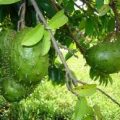
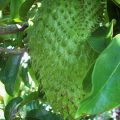
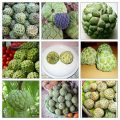
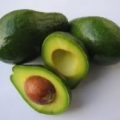

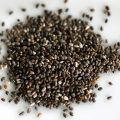

yes guyabano is most beneficial and protection of alll kinds of illnesses.